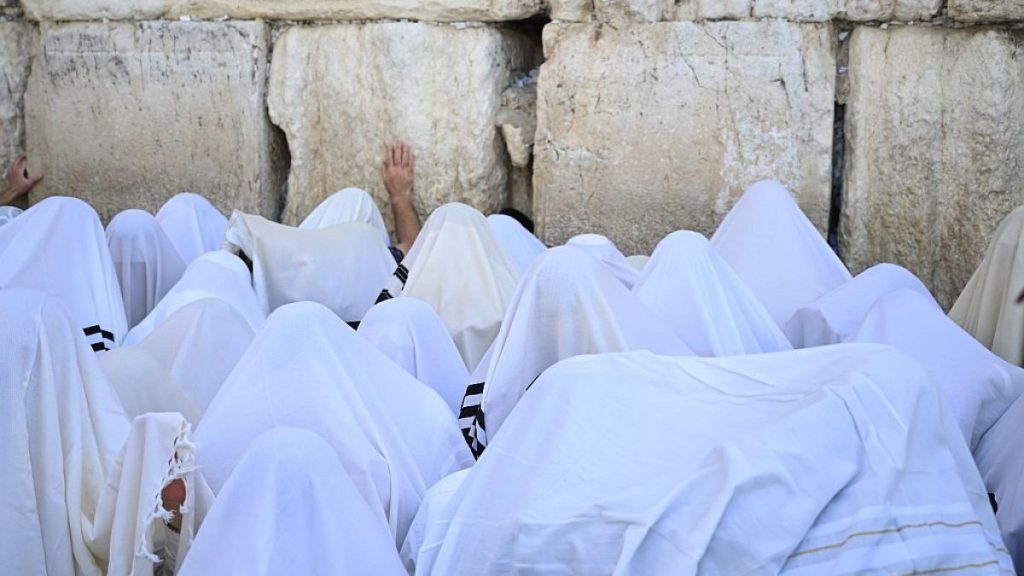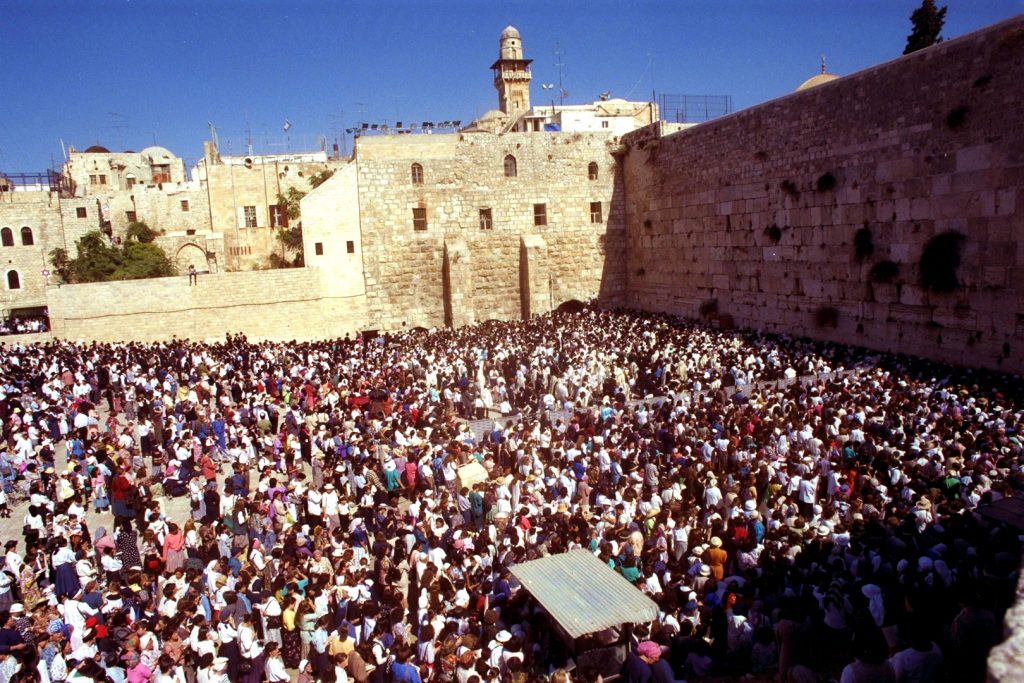Have you ever attended a Jewish service and witnessed a moment where blessings are bestowed in a truly unique and meaningful way? Today, I’m thrilled to dive into the beautiful tradition of the Birkat Hkohanim, also known as the Priestly Blessing. This ancient practice isn’t just a ritual; it’s a profound expression of hope, peace, and spiritual connection that dates back thousands of years!

What Exactly is the Birkat Kohanim?
The Birkat Kohanim is a special blessing that comes from the Torah, specifically found in the Book of Numbers -במדבר (6:23-27). It was originally given to Aaron and his sons, who were the priests (Kohanim) of ancient Israel. They were instructed to bless the Israelites using this specific set of words:
“May the LORD bless you and guard you,
May the LORD make His face shed light upon you and be gracious unto you,
May the LORD lift up His face unto you and give you peace.”
Hebrew:
יְבָרֶכְךָ ה’ וְיִשְׁמְרֶךָ
יָאֵר ה’ פָּנָיו אֵלֶיךָ וִיחֻנֶּךָּ
יִשָּׂא ה’ פָּנָיו אֵלֶיךָ וְיָשֵׂם לְךָ שָׁלוֹם
Transliteration Of Birkat Hakohanim:
Yevarechecha Adonai veyishmerecha
Ya’er Adonai panav eilecha vichuneka
Yisa Adonai panav eilecha veyasem lecha shalom
When is Birkat Hakohanim Recited?
The Birkat Kohanim is traditionally recited by the Kohanim (descendants of the priestly class) during specific times in Jewish prayers and special events. Here’s when the blessing is typically performed:
- During the morning (Shacharit) and additional (Mussaf) services in the Amidah (standing part) prayer.
- During the Morning and Additional Services on Shabbat and Yom Tov.
There’s also a special reciting of Birkat Kohanim during Simacht torah and Passover in the wailing wall in Jerusalem. It’s a very special event to attend which ten of thousands of Jews gather for.

Who is a Kohen?
A Kohen (plural: Kohanim) is considered to be a direct male descendant of Aaron, the brother of Moses, who was the first High Priest (Kohen Gadol) of the Israelites. In Jewish tradition, Kohanim are part of the priestly class, and they have specific roles and responsibilities within religious practices. Here’s a more detailed explanation of who is considered a Kohen:
1. Lineage:
- Direct Descent: A Kohen must be a male who can trace his lineage directly back to Aaron, the first High Priest. This priestly status is passed from father to son, and it has been traditionally maintained through genealogical records and oral traditions.
- Jewish Law: According to Jewish law (Halacha), a man is considered a Kohen if his father was a Kohen, and this status is recognized by the Jewish community. It is a patrilineal inheritance, meaning it is passed down exclusively through the male line.
2. Marital Restrictions:
- Whom a Kohen Can Marry: To maintain their status, Kohanim are traditionally subject to certain marital restrictions. For example, a Kohen is not allowed to marry a divorced woman, a convert to Judaism, or a woman who has engaged in certain prohibited relationships according to Halacha.
- If a Kohen Violates These Restrictions: If a Kohen marries someone who is not permitted (e.g., a divorced woman), his children from that union are disqualified from the priesthood and are not considered Kohanim.
3. Modern Identification:
- Tradition: In many cases, the status of being a Kohen is passed down through family tradition, where a family maintains that they are Kohanim based on knowledge and community recognition.
- Names: Some Jewish surnames, like “Cohen,” “Kagan,” “Katz,” or “Kohn,” are often associated with Kohanim, but having one of these names does not automatically make someone a Kohen. It’s the family’s tradition and recognition by the community that determine Kohanic status.
4. Special Roles and Responsibilities:
- Blessing the Congregation: Kohanim perform the Birkat Kohanim (Priestly Blessing) during certain services, particularly on festivals and during daily services in Israel.
- First Aliyah: A Kohen traditionally receives the first aliyah (the honor of being called up to the Torah) during Torah readings.
- Pidyon Haben (Redemption of the Firstborn): Kohanim are involved in the Pidyon Haben ceremony, where a firstborn Jewish male child is “redeemed” from the Kohanim.
- Restrictions: Kohanim are prohibited from coming into contact with dead bodies (with certain exceptions, such as immediate family members) and are traditionally not allowed to enter cemeteries.

Birkat Kohanim Customs
- Preparation: Before the Kohanim give the blessing, they ritually wash their hands, and it is customary for them to remove their shoes.
- The Congregation’s Role: The congregation traditionally responds with “Amen” after each verse of the blessing.
- Priestly Garments: The Kohanim typically wear a tallit (prayer shawl) over their heads and outstretched arms during the blessing.
A Deeper Dive: Understanding the Components Of Birkat Hakohanim
The Blessing of Protection
The first line, “May the LORD bless you and guard you,” is all about protection. It’s a prayer that God will look after you and keep you safe from harm. Think of it as a divine shield, guarding us in all our daily adventures.
The Blessing of Grace
A request for God’s presence to illuminate the recipient’s life, providing wisdom and clarity. As well as God’s grace and mercy,
The Blessing of Peace
This final blessing is for peace, which encompasses not only the absence of conflict but also completeness, harmony, and wellbeing in all aspects of life.
Each verse in the Birkat Kohanim builds upon the previous one, moving from blessing and protection to divine grace, and finally culminating in the gift of peace. Together, these three verses cover the physical, emotional, and spiritual wellbeing of the person receiving the blessing. The blessing is considered one of the most powerful in Judaism, with deep significance in both personal and communal contexts.
